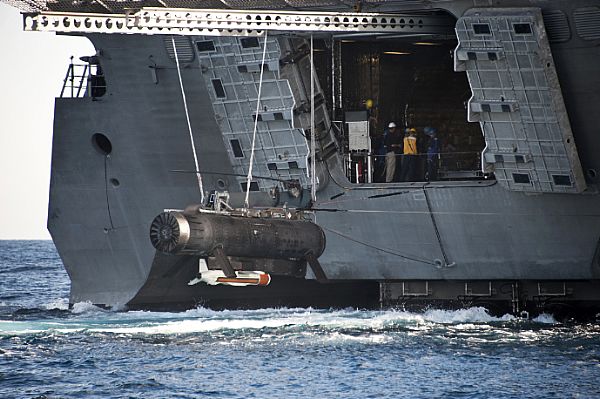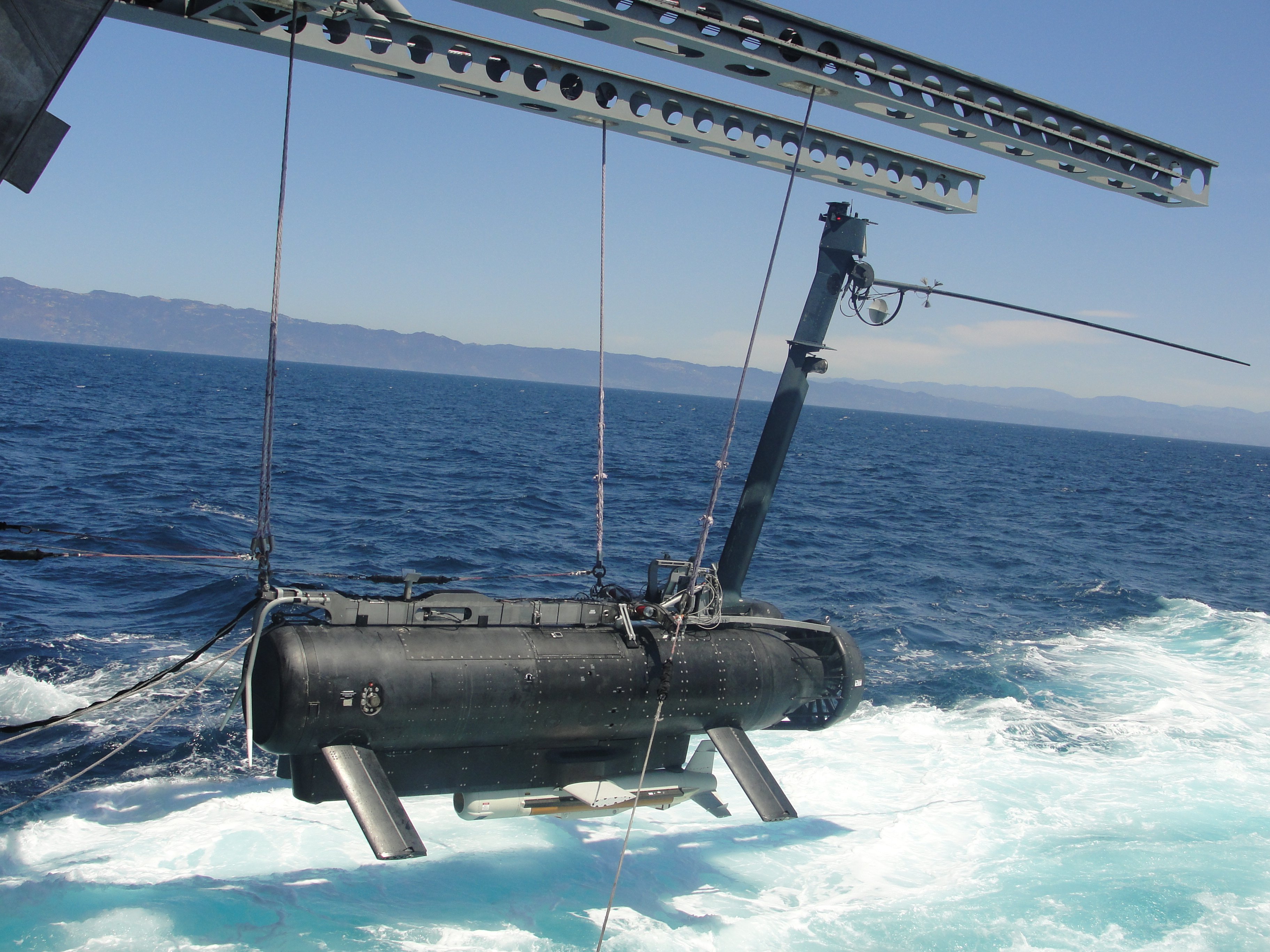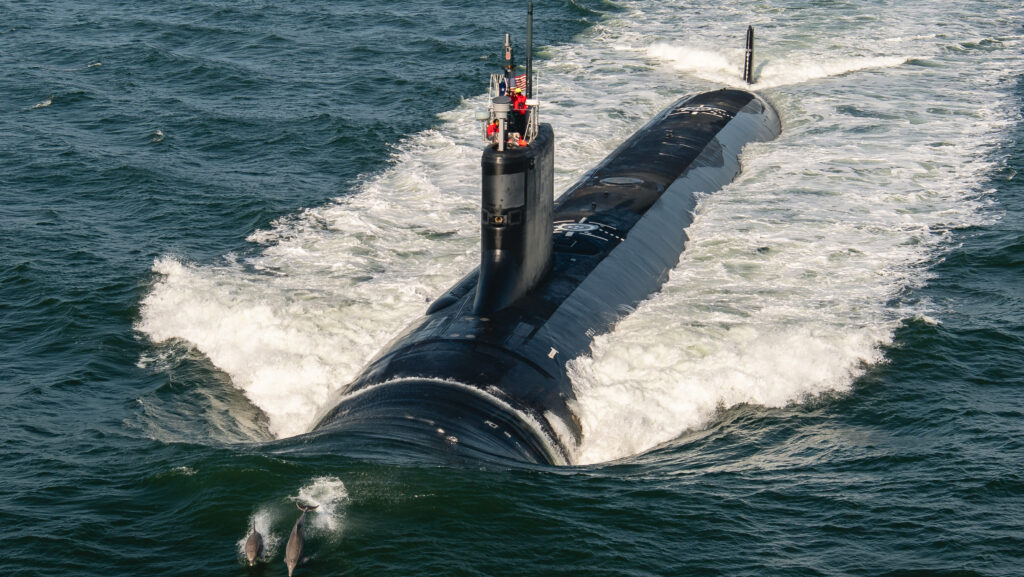
This post has been updated to include additional information from a letter from Pentagon acquisition chief Frank Kendall sent to the Senate Armed Services Committee.
The Navy has chartered an independent review of its criticized Remote Minehunting System (RMS), a key component of its Littoral Combat Ship mine countermeasures mission package, which may affect the service’s decision to move forward with LCS testing and RMS acquisition, a Navy spokeswoman told USNI News.
“The Chief of Naval Operations and the Assistant Secretary of the Navy (Research, Development and Acquisition) chartered an independent review of the Remote Minehunting System (RMS) capability and reliability on September 25, 2015,” Capt. Thurraya Kent said in a Tuesday statement.
“Focus areas of the team’s review include validating the requirements and mission concept of operations; assessing the RMS against the requirements; evaluating alternatives; assessing the program’s technical risk, schedule and cost; and evaluating the program’s management structure.”
The team will report back to CNO Adm. John Richardson and acquisition chief Sean Stackley within 60 days.
Between now and the conclusion of the review, the LCS program office must decide whether to move forward with its final operational testing, which, if successful, would lead to a declaration of initial operational capability (IOC) on the MCM mission package. Most recently, the Navy said it would conduct the operational test in November, pending a formal decision to actually move forward with the testing.
Kent said in her statement that “the progress of this review will also help inform the Navy’s operational test decision and subsequent actions critical to the future of the Navy’s mine countermeasures capability,” though it is unclear if the program office will have to wait for the team’s final recommendation or if it could choose to move ahead with the November test window.

In an Oct. 8 letter to Senate Armed Services Committee chair Sen. John McCain, Pentagon acquisition chief Frank Kendall provided more clarity on the program review.
“The first increment of the MCM MP systems completed a Navy Technical Evaluation on August 30, 2015. Those results will inform an Operational Test Readiness Review in October 2015. The Navy has also chartered an independent program review of the Remote Minehunting System (RMS), which will conclude in November 2015,” read the Oct. 8 letter from These reviews will inform the Department’s assessment of the RMMV’s readiness for IOT&E.”
Until the end of the review, the Pentagon will hold off, “further production of the RMMV until I have agreed on a risk-appropriate strategy,” Kendall wrote.
The RMS – consisting of a Remote Multimission Vehicle (RMMV) towing the AN/AQS-20 sonar – is a workhorse in the LCS MCM mission package but has faced reliability problems since its development. Though Navy officials have said the LCS MCM mission package as a whole has performed well in testing and completes missions faster than legacy Avenger-class MCM ships, the service decided to delay the mission package’s operational test period, which had originally been scheduled to take place over the summer to allow for an IOC declaration by the end of September.
The LCS program office encountered problems across the board during a technical evaluation that immediately preceded the initial operational test and evaluation (IOT&E). Rather than bring Navy and Pentagon testers down to Florida, the program office chose to extend the technical evaluation to work out some of the problems – which LCS Mission Modules Program Manager Capt. Casey Moton said included processes that sailors needed to refine, integration and communication challenges and reliability issues in both the ship and the mission package.
In the midst of the Navy’s efforts to address the RMMV and LCS reliability issues, Senate Armed Services Committee chairman John McCain (R-Ariz.) and ranking member Jack Reed (D-R.I.) wrote to Navy and Pentagon leadership on Aug. 31 to express concerns about the RMMV’s ability to meet Navy warfighting requirements.
“Following a Nunn-McCurdy breach five years ago, the Department [of Defense] certified to Congress that the Remove Minehunting System … would perform more effectively if the Navy were to invest in a reliability growth program, and Congress funded that effort,” the letter reads.
“However, in a memorandum signed earlier this month, the Director of Operational Test and Evaluation (DOT&E) assessed the current Remote Minehunting System and RMMV reliability as being 18.8 hours and 25.0 hours between mission failures, on average, respectively, which is well below the Navy’s requirement of 75 hours. Moreover, DOT&E noted that, ‘Recent developmental testing provides no statistical evidence that the [Remote Minehunting System] is demonstrating improved reliability, and instead indicates that reliability plateaued nearly a decade ago.”
McCain and Reed asked that the Navy and Pentagon look into alternatives for the LCS mission package, including several other unmanned mine countermeasures vehicles in use in other parts of the Navy.
“The decisions made over the next six months will set the course for our nation’s maritime MCM capabilities for decades to come,” according to the letter.
“Too much is at stake to accept the status quo and permit systems with long documented cost, schedule, performance, and reliability shortfalls to get a free pass into the fleet and further production.”





